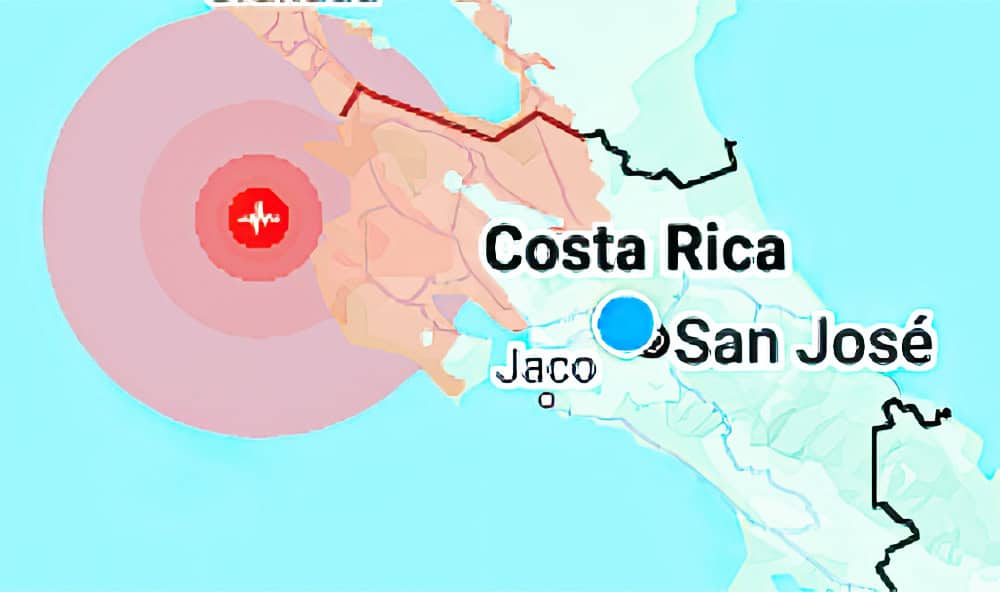Yesterday, a strong earthquake shook the province of Guanacaste at about 11:43 a.m. The Volcanological and Seismological Observatory of Costa Rica (OVSICORI) reported that the earthquake had a magnitude of 6.6, with its epicenter 60 kilometers west of Tamarindo.
OVSICORI later reported a second tremor at 12:12 p.m., with a magnitude of 5.2 and an epicenter in the same place. Through social media, Costa Ricans shared their reports, which showed that the earthquake was felt in different areas of the country.
The Observatory reported that more than 53 seismic events have been registered since yesterday’s earthquake. “The OVSICORI has located a little more than 53 events that are part of the seismic sequence developing off the coast of Tamarindo, in Santa Cruz de Guanacaste. Let’s remember that this sequence started today at 11:43 a.m. with an earthquake of magnitude 6.6, which was widely felt not only by the population of the Nicoya Peninsula but also in the Central Valley,” the institution stated.
According to seismologist Esteban Chaves, OVSICORI identified that the main earthquake had a depth of 45 kilometers, located within the Cocos Plate, which is subducting below the Caribbean Plate and being subjected to a system of compressive forces.
“This system of compressive forces is what generated the rupture of today’s earthquake and the seismic activity developing at this moment,” he mentioned.
The expert pointed out that aftershocks following such large events are completely normal and will continue to occur in the next hours and days, but the earthquakes will gradually decrease in magnitude and frequency. The National Tsunami Monitoring System (SINAMOT) ruled out any tsunami threat from these events.
“OVSICORI is tracking all the events recorded at our stations, which have totaled more than 100 earthquakes by 5 p.m., and we will continue to count them to develop a robust characterization of the seismic sequence and understand its evolution,” he added.







